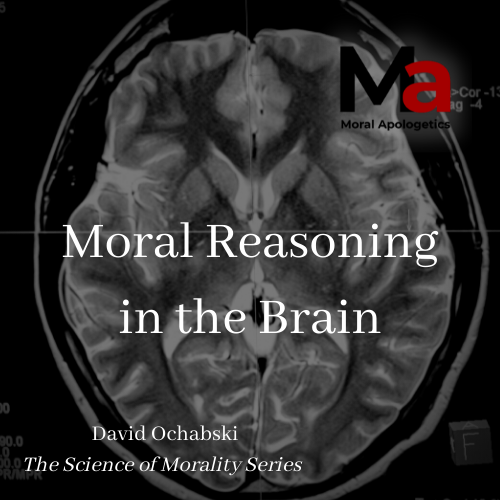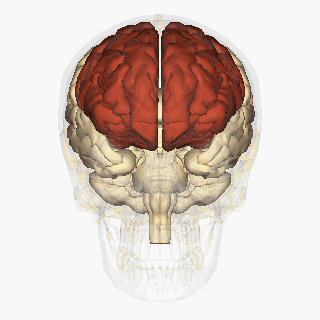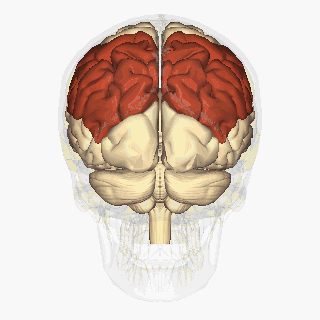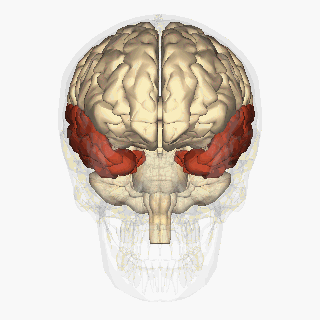Moral Reasoning in the Brain | The Science of Morality
/This entry is part of a series on multidisciplinary and interdisciplinary scientific perspectives on morality. Articles will focus on the latest studies, data, theories, models in the literature, and their relevance for moral apologetics.
In this entry, we discuss what is involved in moral reasoning, parts of the brain associated with moral reasoning, and what it means for theology and philosophy within moral apologetics.
What is Moral Reasoning?
Where Does It Happen in Our Brain?
Theological & Philosophical Implications
What is Moral Reasoning?
Moral reasoning refers to the ways in which people ascertain what is good, bad, right, wrong, virtuous, and vicious. It involves a number of processes including moral sensitivity, moral judgment, moral motivation, and moral action. Various models have been proposed to show how the cognitive and affective (or rational and emotional) aspects of our psychology play a role in the processes of moral reasoning. The primary regions of the brain associated with moral reasoning include the frontal lobe, the parietal lobe, and the temporal lobe. These anatomical structures are intimately involved in morally relevant functions, such as the following.
The perception, processing, and integration of moral emotions (such as fear, disgust, conviction, forgiveness, and charity).
Evaluations, judgments, and decision-making based on others’ beliefs and intentions (such as the magnitude of retributive justice needed in cases of murder and negligence).
Where Does It Happen in Our Brain?
Frontal Lobe
Frontal Lobe
General Functions:
The frontal lobe is involved in reasoning, personality, emotion, and memory formation. Within the frontal lobe are the primary motor cortex (which controls voluntary movement), the prefrontal cortex (which is involved in cognitive, motivational, and emotional processes), Broca’s area (which plays a role in language comprehension and voluntary speech), and the orbitofrontal cortex (which plays a role in personality, mood, social skills, and addiction).
Moral Functions:
The ventromedial prefrontal cortex is involved consistently when making moral judgments. Patients with brain lesions in this area are more likely to endorse utilitarian decisions in moral dilemmas, abstracting consequences, and account for others’ intentions in decision-making.
The orbitofrontal cortex has been implicated with the online representation of punishment and reward and embuing emotionally salient statements with moral value.
The dorsolateral prefrontal cortex mitigates utilitarian responses to moral dilemmas, judges the responsibility for crimes from a third-person perspective, analyzes situations with rule-based knowledge, and possibly executive functions that predict social deception.
The anterior cingulate cortex is involved in error detection, utilitarian responses, recursive awareness, and moral conflict monitoring. Similarly, the medial frontal gyrus intervenes in theory of mind, moral judgment, and integrating emotions with decision-making.
Parietal Lobe
Parietal Lobe
General Functions:
The parietal lobe integrates sensory information and perception, gives us a sense of space and navigation, plays a central role in recognizing pain, pressure, touch, and kinesthetic sense, and is associated with a number of mental processes (such as numerical calculation, mental rotation, working memory, episodic memory, and long-term memory).
Moral Functions:
The temporoparietal junction may be recruited in processing cognitive engagement. It plays a key role in moral intuition, belief attribution and intention in others, and is associated with perceiving and representing social information.
The precuneus is involved in encoding and integrating beliefs with actions and processing prior intentions. The right temporoparietal junction is involved in the recognition of lying.
Lesions in these areas diminish the ability to use mental states in moral judgment. In dictator game studies, the temporoparietal junction is associated with punishing excluders with low offers.
Temporal Lobe
Temporal Lobe & Limbic System
General Functions:
The temporal lobe processes higher-order visual information, spatial representation, and emotion. It is one of the main regions activated during theory of mind tasks. Abnormalities have been associated with psychopathy. The left lobe governs speech and contains Wernicke’s area known to involve language comprehension and verbal memory.
Also contained within the temporal lobe are the hippocampus and amygdala which are central to memory and mood stability. These parts of the limbic system are contained within the temporal lobe, but it does not exhaust it.
Moral Functions:
The superior temporal sulcus is involved in moral judgments related to emotional processing and social cognition. It is indispensable in making inferences about others’ beliefs and intentions, has increased activity during personal dilemmas, justice-based dilemmas (compared to care-based dilemmas). The angular gyrus is engaged during the evaluation of personal moral dilemmas.
In the limbic lobe, the posterior cingulate cortex (which deals with personal memory, self-awareness, and emotional salient stimuli) has been activated during experiences of empathy, forgiveness, and the magnitude of criminal punishment. The insular cortex is activated during experiences of disgust, empathic sadness, emotional processing, detection of uncertainty, and perception of inequity. The anterior insular cortex is involved in visceral somatosensation, emotional feeling and regulation, empathy, anger and indignation, perception of painful experiences in others, and unfair offers in ultimatum games.
Among the subcortical structures, the hippocampus is crucial for the acquisition and retrieval of fear conditioning, induction of appropriate emotional reactions, and the processing of emotional facial expressions. The amygdala is crucial for moral learning and is involved in the evaluation of moral judgments, empathic sadness during morally salient scenarios, and prediction of criminal punishment magnitude. Its dysfunction is implicated with psychopathic affective deficits. The thalamus is activated during the perception and assessment of painful situations and when subjects are asked to decide between moral rules and personal desire. The septum is activated during experiences of charitable contributions and has been associated with psychopathy. The caudate nucleus is activated during altruistic punishment and evaluation of morally salient stimuli.
Theological & Philosophical Implications
So what does this mean for Christian philosophy and theology? What does this mean for moral apologetics in particular? As the field develops and more data are discovered, we will be able to make more reliable generalizations that intersect the disciplines of philosophy and theology. For now, we will cover three implications.
Since there are no specific neural circuits, substrates, or lobes that do not overlap other nonmoral neural entities, it is improbable that there is a “moral brain;” but rather our brains are naturally moral. This would be expected given Christian theism. From the foundations of the world to the eschaton, from the creation of man to the resurrected state, mankind was made to be an integrated whole. It is not natural for our soul to be separable from our body (which will be the case after we die and await our resurrected body). In the same way, the moral, rational, and agential aspects of our personhood should be expected to be an organic unity integrated with our physical body (not merely an organ of our body). Dysfunctions merely show the problems of a corrupted medium of our material body, not the unnaturalness of our immaterial soul (mediated through the body). Personhood may not exhaust the soul (or even the Imago Dei), but it is made the most manifest this side of the new heavens and the new earth.
Studies of patients with lesions show that dysfunction of the brain actually prevents recognition of the expansive array of moral phenomena. This allows us to appreciate when someone is neurologically inhibited from moral sensitivity, giving moral judgments, being morally motivated, and engaging in moral action. (For example, those with brain lesions in their frontal lobe may be prevented from recognizing the normative contributions of deontology and virtue ethics.) If “ought implies can,” then we can empathize with those who cannot recognize the rich diversity of moral phenomena, and possibly allay unwarranted judgment. Again, this does not mean that our souls do not have the capacity (on their own) to recognize the broad range of moral phenomena, but mediated through corruptions of the body, it is limited—and this ought to be appreciated.
The sanctifying process pervades the physical, chemical, biological, psychological, and sociological aspects of human personhood. With our knowledge of moral neurology, we have the opportunity to engage in more remedial and rehabilitative interventions for those who commit ethical transgressions (rather than merely deterrent and retributive punishments). We can ameliorate sin’s effect on our neuroanatomy and have principled reasons for adopting ethical reforms (such as in business, education, and criminal justice)—moving back to the creation order as we await our glorified state. Exploits of neuroplasticity, surgical advances, neural interface technologies, cognitve behavioral therapies, and cultural destigmatization of mental illness, and criminal rehabilitation policies are just some signs of hope we having in restoring the creation order as welook forward for what God has in store in the future to come (though each may come with their own limitationsand ethical quandaries).
Source
Leo Pascual, Paulo Rodrigues, and David Gallardo-Pujol. "How does morality work in the brain? A functional and structural perspective of moral behavior," Frontiers in Integrative Neuroscience, Vol. 7 Iss. 65, (September) 2013. 1-8.












